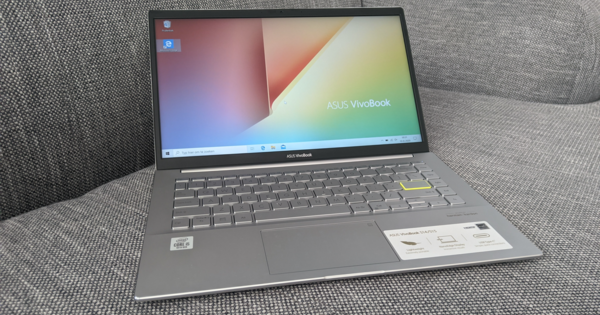A smartphone or tablet is often terribly expensive. As soon as the device comes out of the box, we prefer to put it in a case as soon as possible. We even give the screen a separate protective layer: a screen protector. However, the range of screen protectors is so large that it is not always easy to choose such a protector. Are you going for matte or glossy? Plastic or glass? With or without applicator? We explain the differences and give you tips on how to apply it as bubble-free as possible.
 These are the 13 best smartphones of 2020 December 18, 2020 15:12
These are the 13 best smartphones of 2020 December 18, 2020 15:12  Decision aid: the 10 best smartphones up to 600 euros December 15, 2020 16:12
Decision aid: the 10 best smartphones up to 600 euros December 15, 2020 16:12  Decision aid: the 10 best smartphones up to 300 euros December 14, 2020 16:12
Decision aid: the 10 best smartphones up to 300 euros December 14, 2020 16:12
Tip 01: Plastic or glass?
There are screen protectors for your smartphone in all price categories. You can already get a self-adhesive plastic film for less than a dollar via Asian webshops such as dealextreme.com. For branded products you quickly pay up to a tenner. Plastic screen protectors are generally cheap, thin and widely available. The biggest disadvantage is that they are not always easy to apply. Do you think it is important to have a screen protector without air bubbles? Then you better opt for a glass one. A glass screen protector is thicker and harder, but also more scratch-resistant and easier to apply. The lifespan is a lot longer and it also feels a lot more pleasant. However, the prices can go up to about 30 euros and more for a good quality glass specimen. Often it is a matter of personal preference. One uses Asian plastic and replaces the screen protector every month, the other swears by a glass one and can last about half a year to a whole year.
Tip 02: Advantages and disadvantages
The biggest advantage of a screen protector? Quite wiedes: it protects your screen from scratches. In fact, in the event of a crack, such an extra layer also keeps the pieces of glass together better. In addition, a device with a scratch-free screen is more salable on the second-hand market compared to a device that is covered with scratches. However, there are also disadvantages. Even with the best screen protector, every screen looks less beautiful than without. And then we haven't even mentioned the annoying air bubbles. They simply make your smartphone or tablet ugly. So you have to weigh the pros and cons for yourself. Is it really necessary to use a screen protector? Most manufacturers use increasingly harder glass that scratches less quickly. If you're more of the cautious type or use a book case that protects your screen anyway, a screen protector is a waste of money. Do you often put your smartphone in your pocket and does it also come into contact with change, a bunch of keys or other metal objects? Then we can highly recommend a screen protector.
 A glass screen protector is thicker, but also more scratch-resistant and easy to apply
A glass screen protector is thicker, but also more scratch-resistant and easy to apply Tip 03: Without air bubbles
Are you going for plastic? Then the biggest challenge is to apply the film without air bubbles. In most cases you will find a cloth and a piece of cardboard in the package. First clean your screen thoroughly with the cloth: neatly rub off all fingerprints and any dirt or dust particles. Then align the screen protector properly and try to place it as straight as possible on your device. Do not press the screen yet, drop the screen protector gently on the right place. Finally, use the cardboard card to get rid of any bubbles. You do that by ironing the air to the outsides. Then you remove the protective layer. Finished!
Tip 04: With applicator
Some manufacturers distinguish themselves by supplying so-called 'applicators' with their screen protectors. These copies are of course more expensive, but the chance of a properly applied screen protector is also much greater. Such an applicator is a plastic tool that you clamp around your smartphone. Then apply the screen protector; the applicator makes sure it falls exactly into place. The TYLT ALIN is a prime example. The assistant is available for the most popular smartphone and tablet models and helps you to align the screen protector correctly. It is of course also a successful marketing trick to always have screen protectors of the same brand purchased in the future, because you already have the applicator at home. Belkin has something similar with the security system ScreenCare+, but for the professional market. Thanks to their device, you can have the protective film professionally attached in a smartphone shop.
 Such a special applicator is of course also a successful marketing trick
Such a special applicator is of course also a successful marketing trick
 These are the 13 best smartphones of 2020 December 18, 2020 15:12
These are the 13 best smartphones of 2020 December 18, 2020 15:12  Decision aid: the 10 best smartphones up to 600 euros December 15, 2020 16:12
Decision aid: the 10 best smartphones up to 600 euros December 15, 2020 16:12  Decision aid: the 10 best smartphones up to 300 euros December 14, 2020 16:12
Decision aid: the 10 best smartphones up to 300 euros December 14, 2020 16:12 
